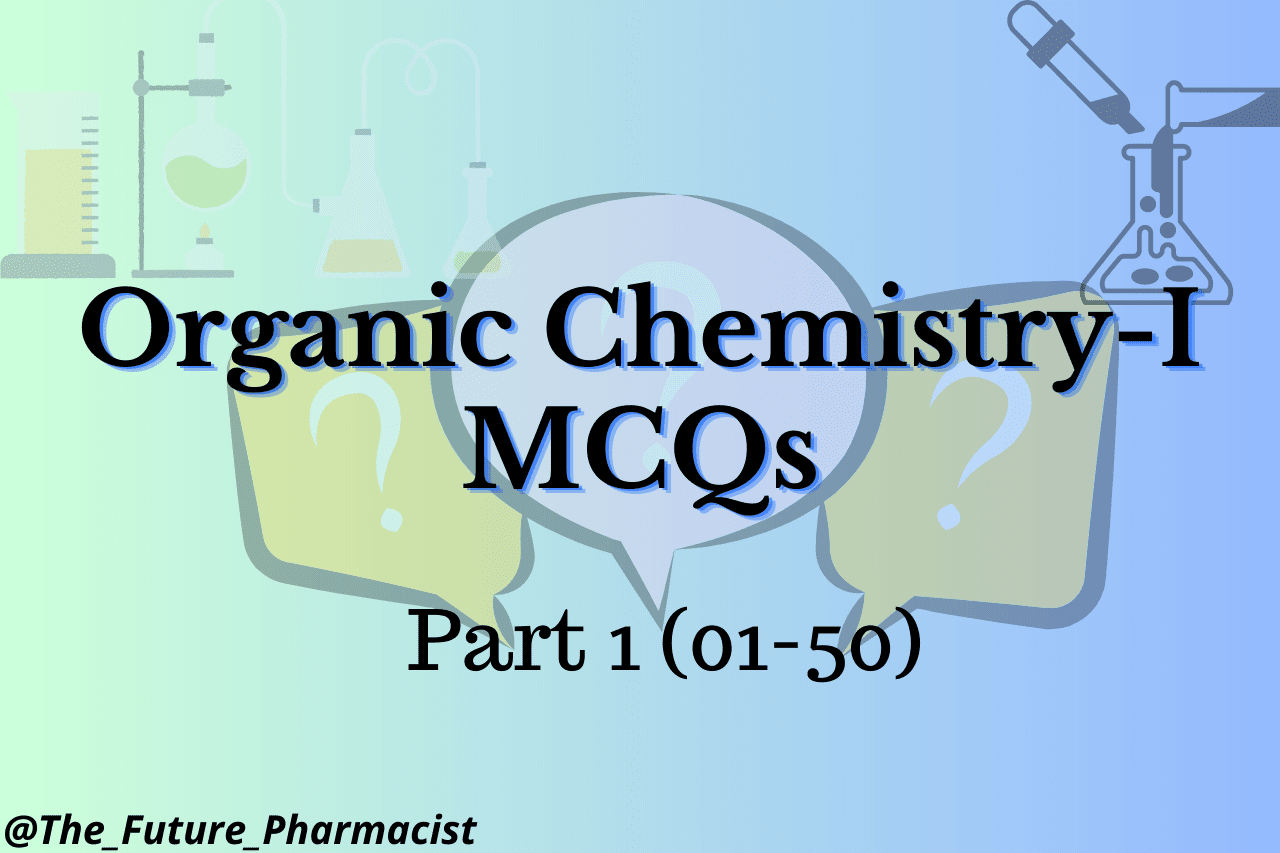This title refers to a study resource that provides multiple-choice questions (MCQs) for Organic Chemistry-I Part 1, which is a fundamental subject for pharmacy students at the university level. The MCQs are aligned with the Pharmacy Council of India (PCI) syllabus, making it a valuable resource for students preparing for various pharmacy exams, including GPAT, NIPER, RRB, and DI exams. Organic Chemistry is a branch of chemistry that deals with the study of carbon-based compounds and their properties. This guide is an ultimate solution for students to master Organic Chemistry-I Part 1 and pass their exams with flying colors. With the help of these MCQs, students can systematically test their knowledge and understanding of key topics and improve their chances of success. The guide is an excellent resource for exam preparation, making it an essential tool for academic success in the field of pharmacy.
1. Find the pH of a solution when 0.01 M HCl and 0.1 M NaOH are mixed in equal volumes.
A. 12.65
B. 1.04
C. 7.0
D. 2.0
2. Which of the following aqueous solution will be the best conductor of electricity?
A. NH3
B. CH3COOH
C. HCl
D. C6H12O6
3. In 0.10 M aqueous solution of pyridine (C5H5N), find the percentage of pyridine that forms
pyridinium ion (C5H5N
+H) (Kb for C5H5N = 1.7 x 10-9).
(a) 1.6%
(b) 0.77%
(c) 0.0060%
(d) 0.013%
Answer: (d)
4. Find the equilibrium constant of the reaction:
If the equilibrium constant for the following reactions are given
A. K2K 3/K1
B. K1K 3 3/K2
C. K2K 3 3/K1
D. K2 3K3/K1
5. Highest pH will be recorded for which of the following solutions if they are equimolar.
A. AlCl3
B. BaCl2
C. BeCl2
D. LiC
11. Addition of Grignard’s reagent to an aldehyde is an example of
A. Nucleophilic addition to C=O group
B. Electrophilic addition to C=C group
C. Cannizzaro reaction
D. Perkin condensation
12. Addition of NH2 group to a carboxylic acid
A. Increases acidity
B. Decreases acidity
C. Both A and B
D. None of above
13. Addition of HBr to an alkene is an example of
A. Nucleophilic addition to C=O group
B. Electrophilic addition to C=C group
C. 1,3- cycloaddition
D. Allylic rearrangement
14. What is the order of reactivity of alkyl halides towards E1 reaction?
A. 1 o >2o> 3o
B. 3 o >2o> 1o
C. 1 o >3o> 2o
D. 2 o> 3o> 1
15. Toluene reacts with a halogen in the presence of iron (III) chloride giving ortho and para
halo compounds. The reaction is
A. Electrophilic elimination reaction
B. Electrophilic substitution reaction
C. Free radical addition reaction
D. Nucleophilic substitution reaction
16. A primary alkyl halide would prefer to undergo _____________.
A. SN1 reaction
B. SN2 reaction
C. α–Elimination
D. Racemisation
21. Which of the following alkyl halides will undergo SN1 reaction most readily?
A. (CH3)3C—F
B. (CH3)3C—Cl
C. (CH3)3C—Br
D. (iv) (CH3)3C—I
22. Reaction of C6H5CH2Br with aqueous sodium hydroxide follows ____________.
A. SN1 mechanism
B. SN2 mechanism
C. Any of the above two depending upon the temperature of the reaction
D. Saytzeff rule
23. Addition of R-MgX to an aldehyde is an example of
A. Electrophilic addition
B. Electrophilic substitution
C. Nucleophilic addition
D. Nucleophilic substitution
24. In case of nucleophilic addition, the geometry of intermediate formed is
A. Trigonal (co-planner)
B. Trigonal (anti-planner)
C. Tetrahedral
D. Bi-pyramidal
25. Carbonyl compounds usually undergoes
A. Electrophilic addition
B. Electrophilic substitution
C. Nucleophilic addition
D. Nucleophilic substitution
31. When propene is treated with HBr in presence of a peroxide, the product formed is
A. Markovnikov’s addition product
B. Anti-Markovnikov’s addition product
C. Both A and B
D. None of the above
32. In nucleophilic substitution, leaving groups are usually
A. Cations
B. Anions
C. Free radicals
D. None of above
33. In case of nucleophilic addition to C=O group, the geometry of intermediate formed is
A. Trigonal (co-planner)
B. Trigonal (anti-planner)
C. Tetrahedral
D. Bi-pyramidal
34. Which of the below statement is true about nucleophile
A. Lone pair donor
B. Bears negative charge
C. Both A & B
D. None of the above
35. Which of the below statement is true about electrophile
A. Lone pair acceptor
B. Bears positive charge
C. Both A & B
D. None of the above
45. Acetaldehyde will undergo
A. Electrophilic addition
B. Electrophilic substitution
C. Nucleophilic addition
D. Nucleophilic substitution
46. The classical test for unsaturation is basically
A. Electrophilic addition of Br2 to C=C
B. Electrophilic substitution to C=O
C. Both A & B
D. None of the above
47. Find the incorrect statement for a nucleophile
A. A nucleophile is a Lewis acid
B. Nucleophiles do not seek electron
C. Ammonia is a nucleophile
D. Nucleophiles attack low electron density sites
48. The correct order of increasing nucleophilicity is
A. Cl– < Br– < I–
B. Br– < Cl– < I–
C. I– < Br– < Cl–
D. I– < Cl– < Br–
49. Find the compound which undergoes nucleophilic substitution reaction exclusively by
an SN1 mechanism
A. Benzyl chloride
B. Chlorobenzene
C. Ethyl chloride
D. Isopropyl chloride
50. What is the order of reactivity of alkyl halides towards E1 reaction?
A. 1 o >2o> 3o
B. 3 o >2o> 1o
C. 1 o >3o> 2o
D. 2 o> 3o> 1














No comments:
Post a Comment